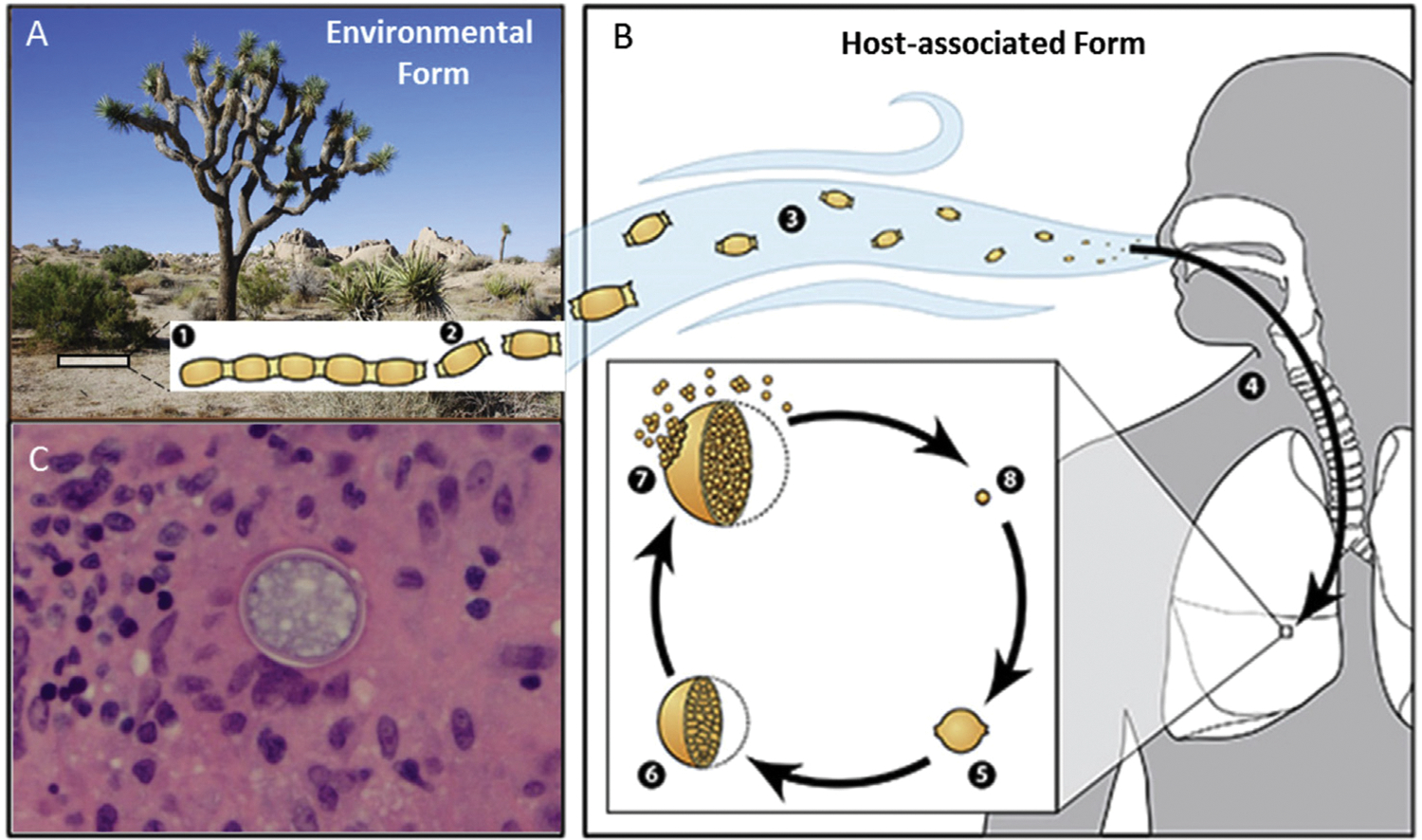Figure 2.

Coccidioides biology. (A) Coccidioides grows as a mold with septate hyphae near the surface of the soil (1). The hyphae fragment into arthroconidia (2) and become aerosolized when the soil is disturbed by human activity or the wind (3). (B) These arthroconidia are inhaled and settle into the lungs, where signals from the environment promote the formation of spherules (5). Spherules divide internally until they are filled with endospores (6). When spherules rupture (7), the endospores are released. Endospores are then able to disseminate and develop into new spherules and to repeat the cycle. (C) Spherule in a soft tissue scalp lesion of a boy with disseminated coccidioidomycosis. Figure modified from https://www.cdc.gov/fungal/diseases/coccidioidomycosis/causes.html#wastate.
